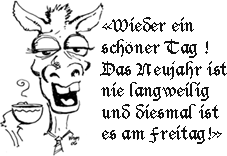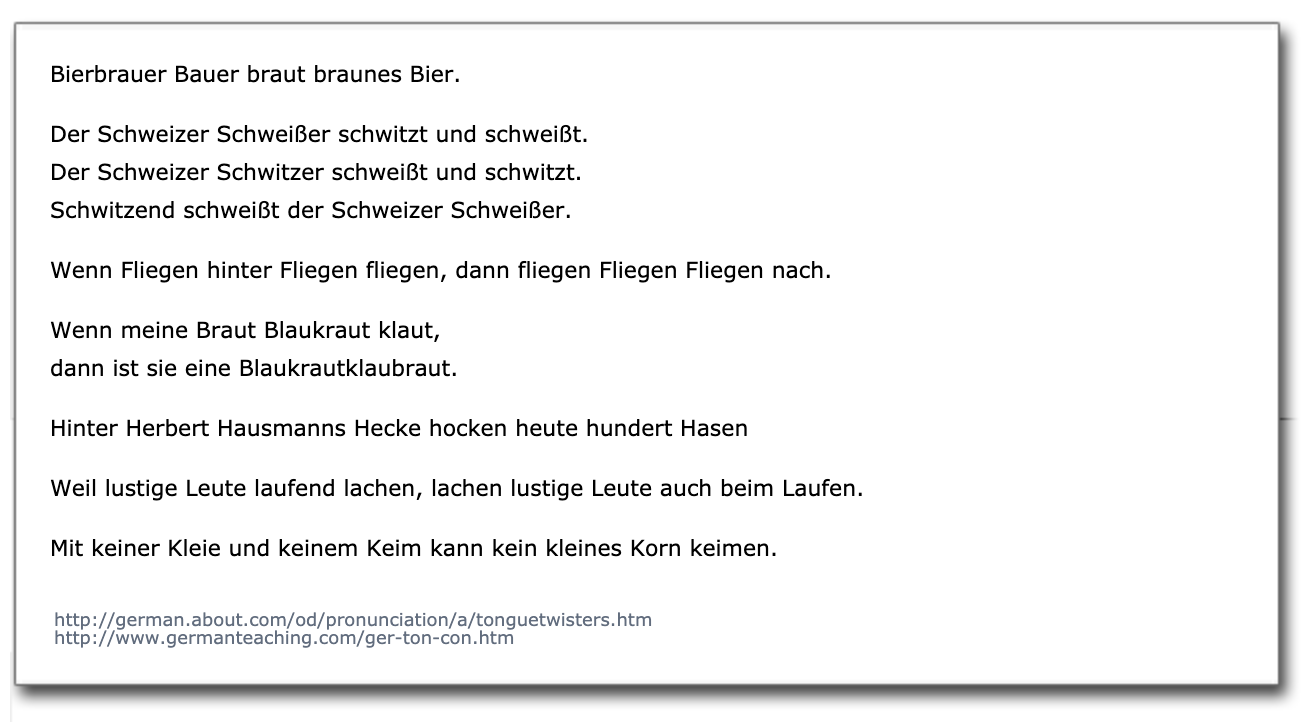5.6: Aussprache
- Page ID
- 103787
Kapitel 5: Diphthongs and Triphthongs
This chapter takes a closer look at sound- and letter-combinations in German involving vowels. Diphthongs, as the name suggests, consist of two vowels, while triphthongs consist of three vowels.

1. DIPHTHONGS
A diphthong is a vocalic double sound. This means that one vowel "merges" with the other. Just think of English words like house (diphthong: [aʊ]), eye (diphthong: [aɪ]), and boy (diphthong: [ɔɪ]). You really should be able to pronounce any and all German words with complete ease… The following are the three diphthongs in German: au, ei/ai, and eu/ä.
Click on the audio symbol to hear the pronunciation of these words. Roll mouse over German text to view English translations.
| Diphthong | Phonetic Symbol | Examples | ||
| au | [aʊ] | das Haus | die Maus | laufen |
| ai / ei | [aɪ] | das Einzelkind | Freitag | im Mai |
| eu / äu | [ɔɪ] | das Neujahr | deutsch | läufst |
There is one more diphthong that occurs pretty much in one interjection only: [ʊɪ] as in Pfui! (yuck!)
Note the difference between the 'ie' and the 'ei' sequence! The former is pronounced like the 'e' in the English "even", whereas the latter is pronounced like "I":
| IE | EI |
| lieben | bleiben |
| die Geliebte | der Freitag |
| die Schwiegermutter | schweigen |
| das Genie | langweilig |
| das Bier | heiraten |
Point of interest: You may encounter some dialects in Germany which have a few more diphthongs than the German you have been learning in Deutsch im Blick. For example, High-Bavarian has two additional diphthongs: ua and oa.
| Diphthong | Example from High-Bavarian |
| ua | Bua "Bub" (boy) |
| oa | zwoa "zwei" (two) |
2. TRIPHTHONGS
A triphthong is a sound that consists of three vowel sounds and forms exactly one syllable – as you can imagine, the number of triphthongs in standard German is very limited.
Click on the audio symbol to hear the pronunciation of the words. Roll mouse over German text to view English translations.
| Triphthong | Phonetic Symbol | Examples | ||
| iau / jau | [jaʊ] | Miau | jauchzen | jaulen |
| aue | [aʊɛ] | klauen | trauen | schauen |
| aua | [aʊa] | Aua | ||
Triphthongs are scarce in Standard German because they were simplified over time into diphthongs and simple vowels. However, in certain dialects like Styrian (Austrian dialect) or Bernese Swiss German diphthongs and triphthongs appear more often.
Point of interest: There is another subgroup of vowel clusters composed of a diphthong plus a dark schwa (remember Kapitel 4?). They inevitably include an e + and r:
| [aɪɒ] | die Eier | die Feier | |
| [ɔɪɒ] | euer | das Feuer | |
| [aʊɒ] | Bauer | sauer | dauern |
Finally, here are some fun tongue-twisters for you to practice with!



